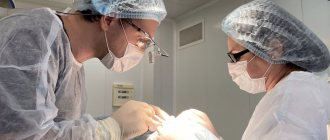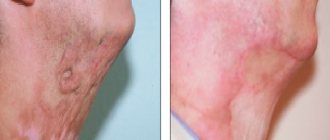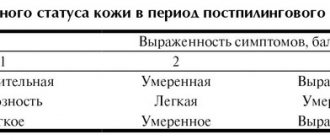Physiotherapeutic procedures are widely used as an additional method to the main treatment, as well as during rehabilitation. This group of methods includes electrophoresis with lidase.
This technique is used in the rehabilitation clinic of the Yusupov Hospital in the treatment of various diseases. The affordable cost of the procedure is combined with the professionalism of specialists and the friendly attitude of the staff, which makes a stay at the Yusupov Hospital not only comfortable, but also beneficial for the body.
Device structure
The electrophoresis apparatus is an alternating current rectifier, semiconductor (now), electron tube (formerly). It operates from a standard network with a frequency of 50 Hz and a voltage of 220 V and is equipped with a milliammeter.
Electrophoresis devices operate primarily using galvanic current. It is continuous, low voltage, constant intensity. Always passing in one direction, the current is able to maintain polarity, strength, and voltage. The action is comparable to a blow of wind that does not change its strength. Thanks to this, the electrophoresis device is able to “deliver” drugs deep into the body, affecting the tissues and mucous membranes of the body. For direct current, even dense tissues can be considered permeable.
Diagnosis of the disease
Diagnosis of adhesions in the pelvis is carried out using various studies:
- Diagnostic laparoscopy. This method can most accurately see adhesions and assess the severity of the process. Diagnosis is carried out under local (or general) anesthesia; a small incision is made through which a camera is inserted.
- Ultrasound of the pelvic organs;
- Hysterosalpingography (performed using X-rays or ultrasound and contrast agents);
- MRI of the pelvic organs.
The necessary examination (or set of examinations) will be prescribed to you by your attending physician.
Mechanism of action of electrophoresis
Electrophoresis introduces drugs percutaneously directly into the pathological focus. The device promotes the breakdown of substances into smaller particles - ions. They move towards the electrophoresis electrodes from opposite poles. When approaching them, the ions undergo electrolysis. They change from ions to atoms due to the loss of their charge.
If a drug is placed on one of the electrodes, it begins to move into the tissue. There it accumulates in depth in the form of a depot and is slowly consumed (up to 2 weeks). Knowing the specific density and resistance of body tissues, the physicochemical properties of the drug, and the parameters of the electric current, it is possible to accurately determine the concentration of the drug at a given depth.
There are two types of ions: anions (-), cations (+). Water breaks down into H (+) and OH (-). Near the electrodes, ions interact with water and form acid and alkali. Therefore, burns are likely at the site where the cathode and anode are attached, and during electrophoresis, pads moistened with water are always used to dilute these solutions.
A change in ion concentration causes the body's cells to become excited. Metabolic processes and the ability to respond to external influences are accelerated. Ultimately, this accelerates intracellular recovery and removes metabolic products faster.
Massage
For skin that reacts to various stresses, a manual massage will be an excellent addition. After electrophoresis, thanks to this massage, the tissues will become flexible and oxygen supply will improve. Also, all beneficial substances delivered using electrophoresis can be quickly absorbed into the dermis.
Carrying out such procedures gives a more pronounced effect than from home procedures for applying cosmetics to the skin. Also, when carrying out electrophoresis, all medical and cosmetic products are supplied in ionic form, without the use of any impurities. Therefore, the procedure is safe and no side effects are observed.
Patients turn to a cosmetologist mainly with problems associated with age-related skin aging, acne or skin whitening. Therefore, facial electrophoresis is most often performed in salons.
Will electrophoresis help get rid of a hernia?
Galvanization is prescribed for hernias as an auxiliary or primary method of treatment. It is not able to get rid of advanced forms of the disease. Its main action is aimed at stimulating the natural regenerative abilities of tissues and relieving pain in the initial stages of the disease.
The use of electrophoresis for hernia leads to:
- changes in the permeability of cell membranes - cells become more sensitive, regenerative capacity increases;
- dilation of blood vessels, which promotes blood flow and the supply of more essential nutrients;
- increased lymphatic drainage - decomposition products are removed more quickly;
- the occurrence of local and general reflex reactions.
Thanks to this, the affected tissues are restored faster, the foci of inflammation are reduced, and the pain syndrome is weakened.
After treatment, most patients experience a decrease in the volume of the hernia by 50% or more, its structure becomes more homogeneous and less dense. In the case of small hernias, in some patients their complete disappearance was recorded.
Adhesions in gynecology: symptoms
The adhesive process can be both acute and chronic, or have a periodic nature (with periodic exacerbation of symptoms). Often, women do not notice any symptoms of adhesions in the pelvis, and the disease is discovered only when examining the possible causes of infertility.
Signs of adhesions in the pelvic cavity:
- Painful sensations in the lower abdomen, lower back, above the pubis or in the sacral area;
- Discomfort during physical activity, before menstruation, after stressful situations;
- Pain during sexual intercourse or urination;
- Intestinal disorders: diarrhea, constipation, flatulence;
- Periodic attacks of nausea and vomiting.
Symptoms may worsen when consuming foods that increase gas formation.
Advantages of using electrophoresis
The main advantage is the rapid achievement of a positive effect due to local effects. Medicines are administered specifically to the desired site. This compares favorably with this method of treatment even from injections. Electrophoresis allows it to be used even by patients with diseases of the liver, kidneys, and gastrointestinal tract (there is no load on these organs). It can be used by people with blood flow disorders. In this case, standard tablets and injections will be ineffective. And the action of galvanic current bypasses the circulatory system.
Already after the first session of electrophoresis, the pain syndrome associated with a hernia decreases
Electrophoresis is effective due to the long-lasting current. Therefore, it is carried out in a course, with pre-calculated sessions. During the intervals between them, the therapeutic effect is maintained.
Electrophoresis has no side effects. The process is non-invasive, so there is no discomfort or recovery period. The action of current through tissue does not cause allergic reactions, eliminating the possibility of overdose.
Scars and scars: their types
Scars on the skin differ according to classification types:
1. Scars are classified according to the type of tissue formation:
- Atrophic type scars are small in thickness and are located lower than the tissue surrounding the scar.
- Scars of the normotrophic type do not affect the relief of the skin surface and the area around it; more often, these formations do not have a distinct color and have good elasticity.
- Scar formations of the hypertrophic type are pink in color and protrude above the skin surface without extending beyond the wound area. This type of scarring can occur as a result of a tissue reaction to injury and if the healing of the injured area occurs with complications and the scars are not treated correctly. After 2 years, such scars can resolve, and in their place scars of normotrophic and atrophic types form.
- Keloid type scars can continually grow, enlarging the injured area. Endocrine disorders and disruptions in the immune system can cause the formation of keloid scars. They occur in places of strong skin tension - in the back, shoulders, chest. Sometimes an ear piercing can cause such a scar to form.
2. Division of scars according to the type of their active formation:
- Active growth scars are visible
- Scars of stable formation.
3. Duration of scar formation:
- Education of young origin
- Scars of old formation.
4. According to the existing qualification division, scars of physiological and pathological origin are distinguished. Physiological scars are painless and do not affect motor functions. Pathological scars are removed surgically or using a conservative treatment method.
Indications for procedures
Electrophoresis is prescribed to all patients diagnosed with a hernia who experience severe pain - an inevitable companion to this disease. Other indications depend on the type of protrusion.
Each type of intervertebral hernia has serious complications, so you should not delay treatment.
See how easy it is to get rid of a hernia in 10 sessions
Indications for electrophoresis for cervical hernia
For herniated intervertebral discs in the cervical spine, electrophoresis is prescribed for:
- dizziness and migraines;
- surges in blood pressure;
- weakness in the upper limbs;
- loss of sensitivity in the limbs;
- limitation of movement, muscle weakness.
Read more about cervical hernia in this article.
Indications for electrophoresis for thoracic hernia
For a thoracic hernia, electrophoresis is indicated for anyone who has:
- numbness, tingling in the upper extremities;
- limited mobility due to muscle hypertonicity.
Read more about the symptoms and treatment of thoracic intervertebral hernia here.
Indications for electrophoresis for lumbar hernia
For a lumbar hernia, electrophoresis is prescribed if the following symptoms are present:
- tingling sensation, numbness of the lower extremities;
- problems with urination;
- the feeling that “your legs won’t obey you.”
Read about other symptoms in the article “Intervertebral hernia of the lumbar spine.”
What causes adhesions to form in the pelvis
Inflammation of the pelvic organs. The disease is diagnosed in women who have suffered acute inflammation or suffer from chronic:
- colpitis;
- endometritis;
- andexite;
- parametritis and other diseases.
Operations. Adhesive disease appears in 16% of those operated for the first time and in 96% of women after the third operation. The percentage is high for laparotomy operations:
- appendectomy;
- C-section;
- removal of appendages;
- hysterectomy;
- supravaginal amputation.
Pelvic hemorrhages. The trigger is ovarian apoplexy, bleeding due to a ruptured tube during an ectopic pregnancy.
Endometriosis. The formation of fibrinous ties is provoked by endometrioid growths, which spread to the organs and peritoneum of the pelvis.
Pelvic injuries. Open and closed damage after accidents, falls from a height received at work are one of the reasons for the appearance of adhesions.
Predisposing factors. The occurrence and development of the disease is influenced by:
- invasive gynecological interventions;
- promiscuous sex life;
- late visit to the clinic.
How an electrophoresis session is performed in the clinic
Electrophoresis sessions are carried out in a special physiotherapy room.
What devices are used
The most popular device for carrying out the procedure is Potok-1. It has long proven itself in the market and does not lose its effectiveness and demand. This is what is used in most clinics.
But there are a large number of modern devices:
- Elfor;
- Nevoton;
- Mustang-Physio-GalvaFor et al.
Electrophoresis devices
The differences between them are minimal. All are easy to use, they have a compact shape and are affordable. The operation of any device is based on galvanic current, which flows continuously, with constant intensity, in one direction. But sometimes Trabert current is used. It has higher frequency, amplitude modulated currents that do not move in a straight line. They can pass sinusoidally, pulsate or change randomly.
Devices can also be equipped with:
- sinusoidal modulated currents;
- pulsed diadynamic currents (DDT);
- fluctuating current.
What types of intervertebral hernias are most difficult to treat?
4 stages of treatment for intervertebral hernia
Procedure
Before the procedure, the specialist prepares the apparatus and solution. You need to adjust the required current strength, which is selected by the attending physician. Electrodes are then attached to the patient with wipes moistened with a special liquid consisting of prescribed medications and water.
Gaskets are installed based on the location of pathological foci. They need to be attached as close to their center as possible. Due to this, the maximum positive effect is obtained.
Electrode location:
- For a cervical hernia,
the first electrode (+) is attached to the neck, the other (-) to the lumbar area. - In case of pathology of the thoracic discs
- (+) is attached to the thoracic spine, (-) to the lower back. - For a lumbar hernia
, the method of split electrodes is used: (+) attached to the lower back, split (two electrodes) (-) attached to the legs - in the back of the thighs or calves.
Then turn on the device and slowly increase the current based on the recommendations. This eliminates discomfort for the patient. During the first session, the electrodes are left on for only 10-15 minutes in order to observe the patient’s condition and completely eliminate negative consequences.
What should the current be?
The current strength for all types of hernias is on average the same. The device is set at 6 milliamps and gradually increased to 15. But these values may vary depending on the characteristics of the human body and the stage of the disease.
Session duration
The duration of the session for cervical hernias is from 5 to 15 minutes. When treating the thoracic and lumbar areas, the procedure will take an average of 20 minutes.
What should be the duration of the course?
The course for cervical hernias is 15 sessions, for pathologies of the thoracic and lumbar spine - 20. These are average numbers, the exact number is determined by a specialist, based on the needs and characteristics of the body. Procedures can be done daily or every other day. The main thing is to complete the entire course in order to achieve a positive effect.
How does the patient feel?
During the procedure, the patient may experience a slight tingling or warmth under the electrodes. Under no circumstances should there be pain or burning sensation. If they occur, the procedure is completed immediately.
The electrophoresis procedure is painless
Cost of electrophoresis
The cost of electrophoresis treatment consists of the cost of medications and the procedure. The average price of medicines is 70 rubles, and procedures – from 500 rubles.
Electrophoresis technique
Referrals for procedures are given by the attending physician after diagnosis and assessment of the patient’s condition. Manipulations are permitted provided there are no contraindications based on the results of instrumental and laboratory studies.
The effectiveness of treatment using electrophoresis is proportional to the completeness of absorption of the medication used. The degree of absorption of the drug depends on:
- patient's age;
- concentration of the main active ingredient of the drug;
- dosage prescribed by the doctor;
- current strength;
- localization of electrodes;
- duration of exposure to the device;
- individual characteristics of the body.
Carrying out at home
Before starting self-medication, it is imperative to consult a doctor. He will prescribe a course of treatment and the necessary medications. The wrong dosage or medication may cause more harm than good. Also, if you are not sure that you will do everything correctly during the first procedure, it is better to have a medical professional nearby and show everything.
For galvanization, many doctors advise purchasing the Potok-1 or Elfor device. They have simple controls, different modes with different current strengths. The price of the device varies from 5,000 to 12,000 rubles. You will also need pads made of gauze or fabric.
Scheme:
- Prepare a working solution. Attention, you can only use freshly prepared mixture.
- The electrodes are fixed exclusively on napkins moistened with a solution, otherwise a chemical burn is possible.
- Remove clothing from the required area of the body to apply electrodes.
- Secure the electrodes and place bags of salt, sand, etc. on top of them for a tighter fit.
- At the end of the procedure, gradually reduce the current supply, turn off the device and only then remove the electrodes.
- Stay calm for 10-15 minutes.
If all prescribed doctor's recommendations are followed, electrophoresis performed at home is in no way inferior in effectiveness. However, it is still worth visiting a doctor in the middle and at the end of the course so that he can determine how much the treatment has helped and whether it is worth adjusting. If pain occurs, the procedure should be stopped immediately and consult a specialist.
Prevention of adhesions
For the prevention and treatment of adhesions, enzyme preparations based on hyaluronidase are used. Perhaps the most popular drug for the treatment of adhesions in gynecology is Longidaza suppositories.
Prevention is mostly aimed at preventing relapses of the disease or before an upcoming operation (since adhesions often appear after them).
Remember that the best prevention is regular visits to the doctor and timely diagnosis. Don’t delay until later and sign up for a pelvic ultrasound or a consultation with a gynecologist.
If you feel acute pain in the abdominal cavity or pelvic organs, do not delay visiting a doctor - prevent the development of the disease. Doctors at the Doctor A clinic will conduct an expert examination and prescribe competent treatment. Call or make an appointment online.
What medications are used for electrophoresis for hernia
Karipazim
Carazipam for electrophoresis
It is a solution for external use, which contains papain, a natural plant substance. The main effect of the drug is the breakdown of necrotic elements and the dilution of blood clots, viscous secretions and other protein compounds. Electrophoresis has a beneficial effect on cartilage tissue, stimulating its regeneration, and enhances the restoration of intervertebral disc tissue.
For external use only. Side effects include allergic reactions. Contraindications: pregnancy, breastfeeding and hypersensitivity to the main component. Does not have a systemic effect on the body.
No cases of drug overdose have been identified. There are no important clinically significant interactions with other drugs. Produced in Georgia and Russia. The price for one ampoule, on average, is from 60 rubles.
The course of treatment must be at least 14 procedures.
Karipain Plus
Karipain Plus for electrophoresis
The drug contains papain, bromelain (an enzyme isolated from pineapple pulp), lysozyme (an antibacterial agent), collagenase (an enzyme that breaks down collagen) and excipients (sodium chloride and lactose monohydrate). It relieves local inflammatory processes and reduces joint pain. Stimulates microcirculatory processes and restores skin elasticity. With the help of galvanization, it penetrates deep into the tissue, stimulates natural reconstructive processes, and softens the hernia. This helps relieve inflammation and reduce pain.
Among the contraindications:
- pregnancy period;
- acute inflammatory processes;
- tissue necrosis;
- disintegration of the intervertebral disc;
- allergic reactions.
No cases of overdose have been identified. There are no important clinically significant interactions with other drugs. Produced in Georgia and Russia. The price for one ampoule, on average, is from 210 rubles.
The number of sessions is individual, on average 10-20 sessions.
Novocaine
Novocaine for electrophoresis
The main active ingredient of the drug is procaine hydrochloride 5 mg or 20 mg. Auxiliary ingredients: sodium chloride, water for injection. The drug is available in the form of an injection solution. Has a local anesthetic effect. Therefore, it is prescribed mainly to patients with pronounced pain syndrome due to a hernia.
Contraindications include hypersensitivity to the main active ingredient, progressive cardiovascular disorders, and pregnancy.
Side effects include:
- headache;
- drowsiness, weakness;
- blood pressure surges;
- tachycardia;
- nervous excitement.
Novocaine enhances the effect of sedatives, anesthetics and muscle relaxants. Therefore, it must be used for electrophoresis strictly as prescribed by the attending physician.
They mainly use a drug of Russian origin. The price for 10 ampoules of 0.5% 10 ml starts from 50 rubles. The duration of the course and dosage are regulated by the doctor.
Eufillin
Eufillin for electrophoresis
The active ingredient of the drug is aminophylline. The effect of the drug leads to a decrease in muscle contractile activity. Eufillin is mainly used in pulmonology. In the treatment of hernias, it is used to dilate blood vessels, which improves blood flow in the lesion and stimulates venous outflow. Due to this, pain is reduced and swelling in the area of inflammation is resolved. Thanks to galvanization, the drug has a targeted effect without having a systemic effect.
Local application reduces the occurrence of side effects. A slight drop in blood pressure, dizziness, and tachycardia may occur. Contraindications: allergic reactions, convulsions, severe liver or kidney failure.
Eufillin increases the effect of glucocorticoids, drugs that excite the central nervous system. Reduces the activity of lithium salts. The country of manufacture of the drug is Russia. A box of 10 ampoules will cost 40-60 rubles.
Trypsin
Trypsion for electrophoresis
Trypsin is an enzyme of the hydrolase class that breaks down peptides and proteins. Therefore, its pharmacological effect is regenerative and anti-inflammatory. The main function is the disposal of half-life products.
Contraindications: tumor processes, pregnancy, allergic reactions. Side effects include: tachycardia, allergies.
There are no important clinically significant interactions with other drugs. Trypsin is produced in Russia. The price for trypsin 10 ampoules of 10 mg each starts at an average of 500 rubles.
The duration of the course and dosage are prescribed by the attending physician.
We use non-surgical hernia treatment techniques
Read more about our unique technique
Are there any contraindications
Despite the large number of advantages, there are certain contraindications to the use of electrophoresis, which must be taken into account before starting treatment. First of all, the most common contraindications include individual intolerance to individual components of the drugs used (most often allergic reactions occur to anesthetics). In such cases, you need to choose another drug that does not cause an allergic reaction.
Contraindications for the use of electrophoresis
Electrophoresis is not recommended if the patient has the following pathologies:
- radicular syndrome (pathological condition accompanied by damage to the roots of the spinal nerves);
- development of malignant formations (in case of cancer, exposure to galvanic current is not recommended);
- using an electrical device to maintain heart rhythm (this means a pacemaker);
Pacemaker - disruption of the cardiovascular system;
- complicated form of bronchial asthma;
- damage to the skin in the neck area, for example, scratches or pustules;
- increased body temperature;
- intolerance by the patient's body to electric current;
- development of infectious diseases.
Be sure to discuss everything with your doctor
Important! Many people mistakenly assume that electrophoresis is strictly prohibited during menstruation. But menstruation is a natural process that is not the result of any serious illness. Electrodes cannot be applied only to the area of the ovaries, but with cervical osteochondrosis, the affected area is in the neck area.
Ignoring all of the above contraindications can lead to serious consequences. As a result, electrophoresis may not only not help cope with the signs of cervical osteochondrosis, but also harm the patient’s body even more.
FAQ
Can electrophoresis be used for children?
Galvanization is often used in pediatrics. There is no need to be afraid of this procedure. It does no harm, is non-invasive, absolutely painless. But only a doctor should select the necessary medications, frequency and amplitude of the current.
Is it possible to combine electrophoresis with other procedures - acupuncture, massage, paraffin baths?
Electrophoresis is compatible with many other procedures, such as acupuncture, various therapeutic and cosmetic massages, and paraffin baths. But a complex treatment regimen is developed by a doctor, since between some manipulations it is necessary to take a break from several hours to several days.
Literature:
- ICD-10 (International Classification of Diseases).
- L. O. Neuropathology. - M.: Education, 1982. - P.307-308. Bogolyubov.
- Medical rehabilitation (manual, 3 volumes). // Moscow - Perm. - 1998. Popov S. N.
- Physical rehabilitation. 2005. - P.608.
- State Register of Medicines (GRLS) of the Russian Federation.
Themes
Intervertebral hernia, Spine, Pain, Treatment without surgery Date of publication: 12/23/2020 Date of update: 01/11/2021
Reader rating
Rating: 4.33 / 5 (3)
Is it possible to get pregnant during adhesions?
Adhesions disrupt the proper functionality of the reproductive organs, which greatly reduces the chance of getting pregnant. There is a chance of pregnancy and its successful gestation, especially in cases where the adhesive process affected only one tube. But the likelihood of conception decreases, and the risk of ectopic pregnancy and miscarriage also increases.
In this case, IVF may help. The fallopian tubes are not involved in such fertilization, and a 3-5-day-old embryo is immediately implanted into the uterine cavity.
Therapeutic effects
Electrophoresis has the following therapeutic effects:
- anti-inflammatory
- dehydrating (promotes the release of fluid from tissues and swelling)
- anesthetic
- calming
- vasodilator
- relaxing (especially for muscles)
- normalization of metabolism, nutrition of organs and tissues
- secretory (production and release of biologically active substances into the blood)
In “ENT Clinic No. 1”, electrophoresis is carried out using the “Galvanizer Potok 1” device, after a thorough examination of the ENT organs by a doctor and determination of the indications for this procedure. Possible combination with other therapeutic methods.
Magnetic laser therapy
Magnetic laser therapy is carried out to improve blood circulation in the affected organ, enhance the migration of immune cells and deliver drugs to the inflammatory focus. At the same time, swelling and pain are reduced and the resorption of pathological infiltrates in tissues is accelerated.
The duration of the procedure is from 5 to 20 minutes
Magnetic laser therapy in urology.
Magnetic laser therapy in urology is used for
- Chronic prostatitis - externally on the lower abdomen or perineum and rectally
- Chronic urethritis – in the urethra
- Pyelonephritis – on the projection of the kidneys
- Cystitis – externally to the bladder area
- Orcho-epididymitis - on the scrotum
Magnetic laser therapy in gynecologists.
Gynecologists use this type of physiotherapy for diseases such as:
- Vaginitis, cervicitis – vaginally
- Adnexitis, salpingo-oophoritis - externally on the projection of the ovarian appendages
Physiotherapy in the treatment of ENT diseases.
Otolaryngologists use magnetic laser therapy to treat diseases:
- Tonsillitis - on the tonsils
- Pharyngitis - on the back of the throat
- Laryngitis – externally in the projection of the larynx
- Rhinitis – on the nose area and nasal passages
- Otitis – parotid region and external auditory canal
Magnetic laser therapy and other areas of medicine.
Neurologists use this procedure on inflamed areas of muscles, nerve roots and trunks. Dermatovenerologists and mycologists for the treatment of nails and inflammatory skin diseases.
INDICATIONS FOR DRUG ELECTROPHORESIS
There are many indications for the use of medicinal electrophoresis. In particular, electrophoresis is carried out for the following therapeutic purposes:
- Anti-inflammatory and antibacterial therapy.
- Reduced pain.
- Reducing muscle spasms.
- Reducing swelling and lymphostasis.
- Control of calcification formation.
- Control of scar tissue formation.
Electrophoresis is used for the following diseases:
- Nervous diseases: neuritis, neuralgia, migraines.
- Cardiovascular diseases: coronary heart disease, hypertension stages I, II.
- Pulmonary diseases: chronic and acute bronchitis, bronchial asthma, pneumonia.
- ENT diseases: tonsillitis, sinusitis, otitis, pharyngitis.
- Gynecological diseases: colpitis, cervicitis.
- Urological diseases: prostatitis, cystitis, pyelonephritis.
- Diseases of the digestive system: stomach and duodenal ulcers, colitis, gastritis, cholecystitis.
- Surgical diseases: treatment of scars, long-healing wounds.
- Dermatology: acne scars, seborrhea, rosacea.
ELECTROPHORESIS FOR THE TREATMENT OF CHILDREN
Medicinal electrophoresis is a method of electrotherapy, the therapeutic effect of which on the child’s body is due to the combined effect of a low-power direct electric current and a medicinal substance introduced into the skin with its help.
Electrophoresis is sometimes called “injections without a syringe.” The effect of the drug substance significantly prevails over the effect of electric current. When using the term “electrophoresis” it is combined with the name of the administered drug substance, for example: calcium electrophoresis, penicillin electrophoresis. In foreign terminology and in cosmetology, the term iontophoresis is used, which more accurately reflects the essence of this physiotherapeutic method. Medicinal electrophoresis is widely used in pediatrics, as it allows one to avoid injections that frighten children, and allows one to reduce the concentrations and doses of drugs, reducing their side effects and preventing allergic reactions. The targeting of medicinal effects and the creation of long-term medicinal depots are used in cosmetology, dermatology and dentistry.










